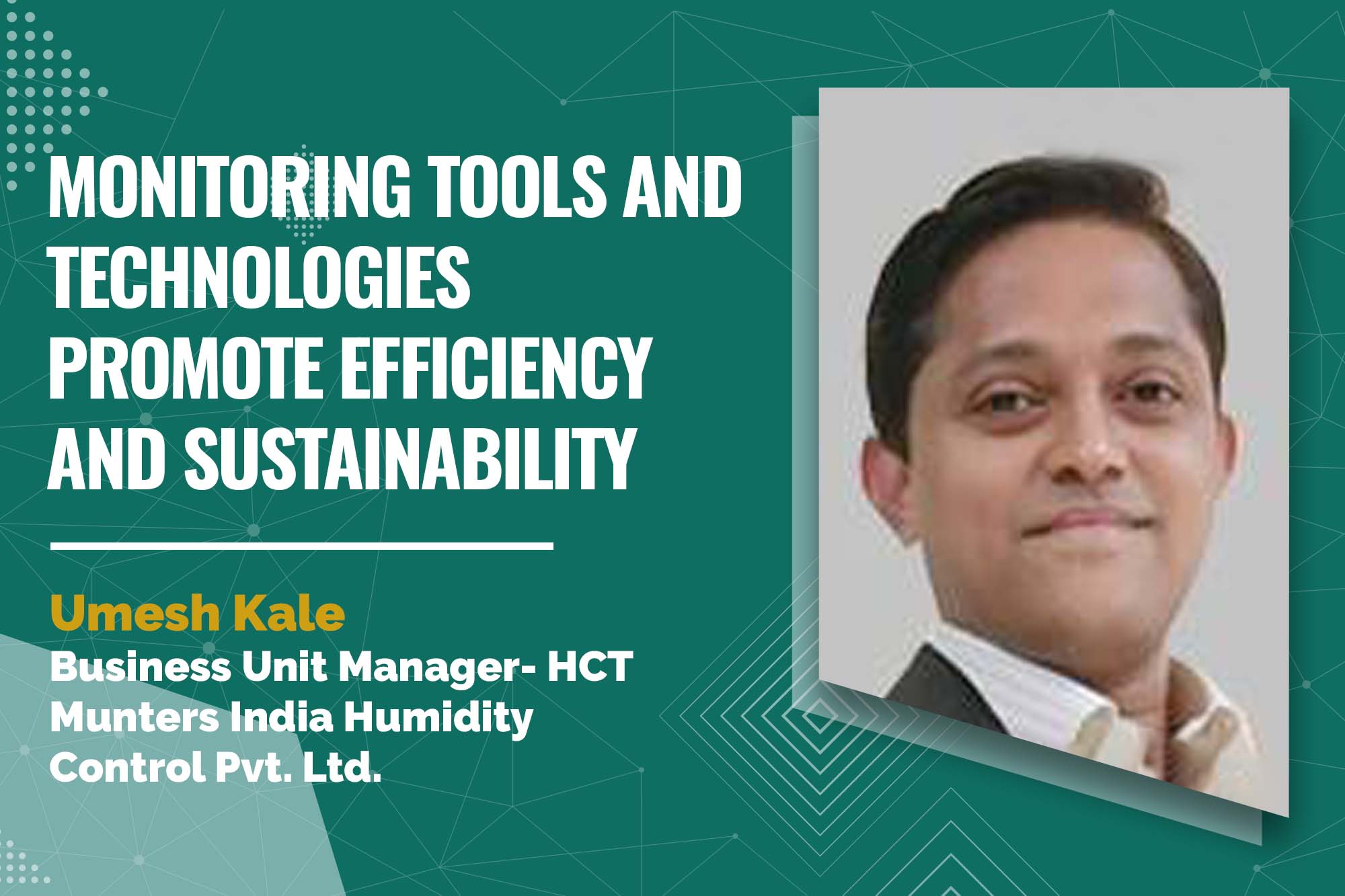Umesh Kale, Business Unit Manager- HCT, Munters India Humidity Control, explores the integration of IoT, advanced analytics, and remote monitoring is inducing change in HVACR system optimisation and embracing interconnected technologies for sustainability and efficiency.
How will adopting advanced data analytics in the HVAC industry reshape maintenance practices in 2024?
The changes in the HVAC sector for 2024 include a shift towards data-driven approaches. Advanced data analytics is expected to play a key role, empowering maintenance measures and enabling the early identification of potential issues to prevent breakdowns. Additionally, adopting remote system management aims to enhance overall comfort levels while concurrently reducing operational costs.
Another transformative trend involves the emergence of subscription-based models. This departure from conventional ownership structures could see the rise of pay-per-use or service-oriented models. This shift improves affordability and enhances maintenance practices,
How do incorporating AI and IoT into HVAC systems enhance efficiency and optimise energy consumption?
The synergy of AI and IoT technologies enhances HVAC system efficiency. Through real-time optimisation, AI algorithms analyse data from interconnected sensors, such as those monitoring temperature, humidity, occupancy, and weather. This dynamic analysis enables the automatic adjustment of temperature settings, airflow, and ventilation, fostering an environment of continuous adaptation.
Moreover, AI is crucial in predictive maintenance, scrutinising system performance data to foresee potential equipment failures before they manifest. This approach facilitates timely maintenance interventions, averting costly breakdowns and prolonging the overall lifespan of HVAC equipment. AI-driven systems seamlessly integrate with smart grids in demand planning and response. This integration enables the adjustment of energy consumption in response to real-time electricity prices. As a result, operating costs are effectively managed, and the contribution to grid stability is optimised.
How can interconnected HVACR technologies contribute to sustainability, and what opportunities do they present?
The interconnected future of HVACR presents a vast opportunity for creating a more sustainable and efficient built environment. By leveraging the capabilities of AI, IoT, and big data, we can elevate the utility of HVACR systems. These advancements deliver optimal comfort and minimise environmental impact and operational costs.
In what ways do data-driven insights power predictive maintenance and energy reduction in HVAC systems?
Data-driven insights are crucial in predictive maintenance and energy conservation within HVAC systems. AI-powered analytics platforms process vast amounts of data, discern patterns, predict equipment failures, and suggest optimisation strategies. These valuable insights enable utility managers to make informed, data-driven decisions, enhancing efficiency and lowering costs. This technology is increasingly being integrated into HVACR maintenance practices, allowing technicians to visualise hidden components, overlay real-time data onto physical equipment, and even receive remote guidance from experts.
How are advancements in monitoring tools shaping the evolution of interconnected HVAC systems?
Advancements in monitoring tools are driving the evolution of connected HVACR systems. Integrating the Internet of Things (IoT) has played a prime role in this progress, facilitating real-time data collection and communication among various HVACR components through connected sensors and devices.
Furthermore, data analytics and machine learning algorithms are now employed to analyse extensive datasets obtained from DH systems. This analytical approach aids in predicting potential issues, optimising system performance, and offering insights that contribute to informed decision-making.
Cloud-based platforms have ushered in a new era of remote monitoring and control for DH systems. Through these platforms, facility managers and technicians can access system data, troubleshoot issues, and adjust settings from any location with an internet connection.
Monitoring tools are also focusing on energy management, emphasising efficiency and sustainability. They track energy consumption patterns, pinpoint areas for improvement, and facilitate implementing strategies to reduce overall energy usage. Further, predictive maintenance algorithms use real-time data to forecast failures in HVAC equipment. This proactive approach allows for timely maintenance interventions, minimising downtime, and extending the lifespan of the equipment.
Cookie Consent
We use cookies to personalize your experience. By continuing to visit this website you agree to our Terms & Conditions, Privacy Policy and Cookie Policy.















